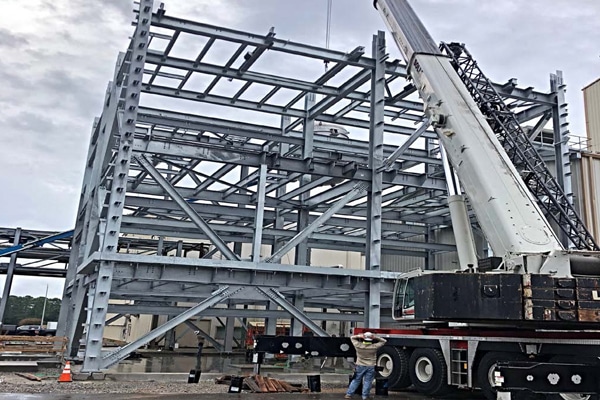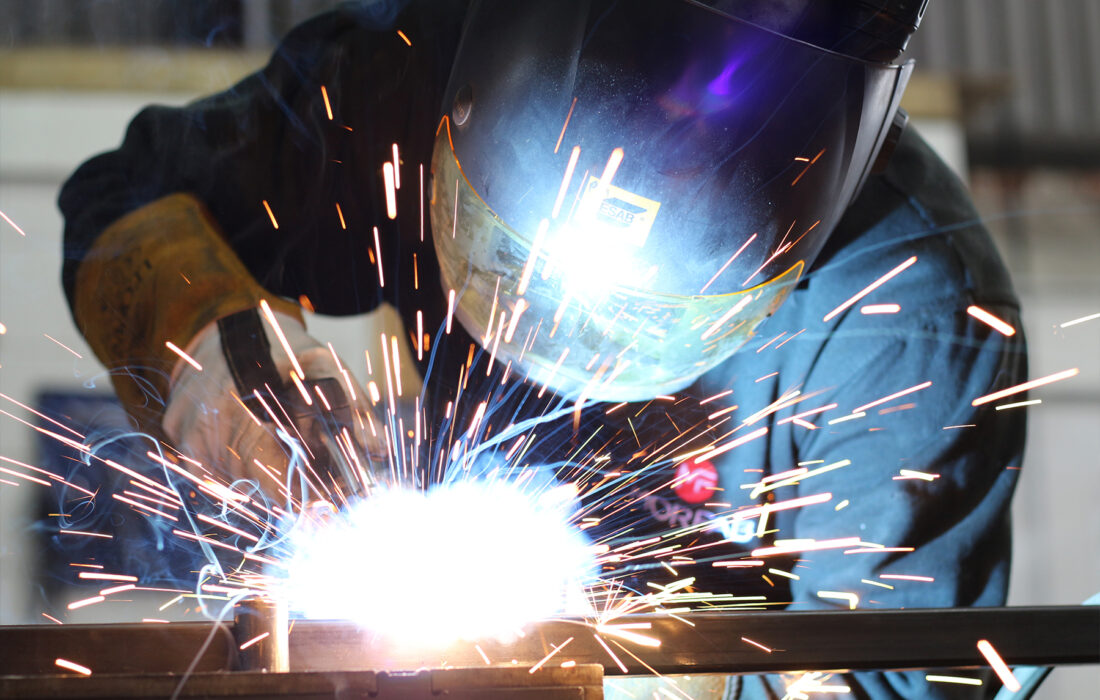Comprehensive Analysis of Cutting-Edge Techniques in Steel Fabrication Industry
As the steel fabrication industry continues to progress, the assimilation of innovative strategies has become necessary for remaining affordable and meeting the demands of modern manufacturing criteria. In this vibrant sector where technology plays a pivotal role, understanding the nuances of these advanced methods is not simply an alternative yet a need for those looking to build in advance in the ever-evolving globe of steel manufacture.
Laser Reducing Innovations
In the realm of steel manufacture, laser reducing innovations have actually transformed the precision and efficiency of metal shaping processes. By utilizing the power of focused laser beams, suppliers can currently accomplish exceptional degrees of accuracy when cutting through various kinds of steels. This innovation allows elaborate styles to be implemented with very little material wastefulness, making it a cost-efficient remedy for industries calling for high precision elements.
One of the vital benefits of laser cutting is its ability to handle a vast array of products, consisting of stainless steel, light weight aluminum, and carbon steel, effortlessly. The process generates tidy, burr-free edges, removing the need for added completing steps. In addition, the non-contact nature of laser cutting reduces the threat of material contamination, resulting in better output.
Moreover, laser cutting makers can be programmed to make swift, specific cuts, dramatically minimizing production time contrasted to conventional reducing methods. This rate and accuracy make laser cutting specifically appropriate for mass manufacturing environments where performance is critical. As technology continues to breakthrough, laser cutting is poised to play a significantly important duty in the steel fabrication industry.

CNC Machining Innovations
The development of CNC machining innovations has ushered in a new age of precision and performance in the steel manufacture industry. Computer Numerical Control (CNC) devices have reinvented steel manufacture by offering exceptional accuracy and repeatability in the manufacturing process. steel fixing. Among the vital technologies in CNC machining is the integration of advanced software systems that enable real-time tracking and changes, bring about boosted performance and top quality control
In addition, the growth of multi-axis CNC makers has actually enabled for the fabrication of complex steel parts with detailed layouts that were formerly challenging to create. These devices can perform a large range of machining operations, consisting of milling, boring, transforming, and grinding, all with high degrees of accuracy.
Additionally, the consolidation of automation and robotics in CNC machining has streamlined manufacturing procedures, minimized lead times, and minimized the margin of mistake. This combination of advanced technologies not just improves performance yet likewise ensures regular high quality across all made steel components. To conclude, CNC machining innovations remain to drive improvements in the steel fabrication sector, setting brand-new requirements for precision and performance.
Automated Welding Technologies
Automated welding innovations have reinvented the steel manufacture market, enhancing performance and precision in the welding process. These cutting-edge innovations utilize computer-controlled systems to automate the welding procedure, resulting in greater productivity degrees and improved weld high quality. Among the crucial benefits of automated welding is the capability to execute intricate welds with constant accuracy, minimizing the likelihood of mistakes and revamp.
Robotic welding systems go to the forefront of automated welding modern technologies, using exceptional rate and precision. These systems can deal with a variety of welding tasks, from straightforward to intricate, effortlessly (metal fabrication melbourne). By utilizing sophisticated sensing units and software, robotic welders can adapt to variants in product and joint geometry, ensuring an uniform and reputable weld
In addition, automated welding technologies improve work environment security by decreasing the direct exposure of human welders to hazardous fumes and intense heat. As the steel fabrication market remains to develop, integrating automated welding innovations will certainly be necessary for firms aiming to remain affordable and fulfill the expanding needs for high-grade bonded items.
Robotics Assimilation in Manufacture
Making use of robotic systems in manufacture processes has become a critical technique for enhancing efficiency and accuracy in modern-day manufacturing atmospheres. Robotics combination in steel fabrication offers a myriad of benefits, consisting of raised performance, enhanced quality assurance, and enhanced safety and security actions. These innovative robotic systems are geared up with sophisticated sensing units and programs capabilities, allowing them to execute complex jobs with a high level of precision and repeatability.
Among the vital benefits of robotics combination in steel fabrication is the capacity to automate repeated tasks, such as material handling, reducing, welding, and assembly procedures. This not just speeds up manufacturing cycles however also lowers the danger of human mistake, causing higher total product top quality. Furthermore, robots can run 24/7, dramatically increasing manufacturing outcome and meeting limited project due dates.

3D Printing in Steel Production
Having reinvented the steel manufacture sector through robotics combination, the blossoming expedition of 3D printing in steel production is positioned to further advancement the realm of contemporary production strategies. 3D printing, also referred to as additive manufacturing, uses extraordinary layout freedom and complexity, allowing the development of complex steel frameworks that were formerly unattainable via traditional manufacturing methods. By using computer-aided style (CAD) software program, suppliers can specifically regulate the layer-by-layer deposition of steel product, causing get rid of boosted functionalities and geometries.
Among the key benefits of 3D printing in steel production is its capacity to lower product waste dramatically. Unlike subtractive production procedures where excess material is cut away, 3D printing just uses the essential quantity of steel needed for click the final part. This effectiveness not only results in cost financial savings however likewise lines up with sustainable production more techniques by lessening environmental effect.
Additionally, 3D printing allows rapid prototyping and customization, permitting the manufacturing of small sets of complicated steel components with brief preparations. As the technology continues to mature and become extra easily accessible, its combination right into mainstream steel construction processes is anticipated to drive innovation and performance across the industry.
Conclusion
In conclusion, the steel construction market has seen considerable advancements in methods such as laser cutting, CNC machining, automated welding, robotics combination, and 3D printing. These innovative innovations have actually reinvented the means steel items are produced, bring about raised efficiency, cost-effectiveness, and accuracy. Proceeded financial investment in these innovative techniques is essential for the industry to stay competitive and meet the needs of modern-day production procedures.
As the steel construction market proceeds to progress, the combination of advanced techniques has actually come to be necessary for remaining competitive and fulfilling the needs of contemporary production criteria.One of the crucial advantages of laser cutting is company website its ability to manage a vast array of materials, consisting of stainless steel, light weight aluminum, and carbon steel, with ease.Automated welding technologies have changed the steel construction market, enhancing performance and precision in the welding procedure.Having changed the steel fabrication sector with robotics assimilation, the expanding exploration of 3D printing in steel production is poised to more advancement the world of contemporary manufacturing strategies.In verdict, the steel construction market has seen considerable developments in methods such as laser cutting, CNC machining, automated welding, robotics assimilation, and 3D printing.